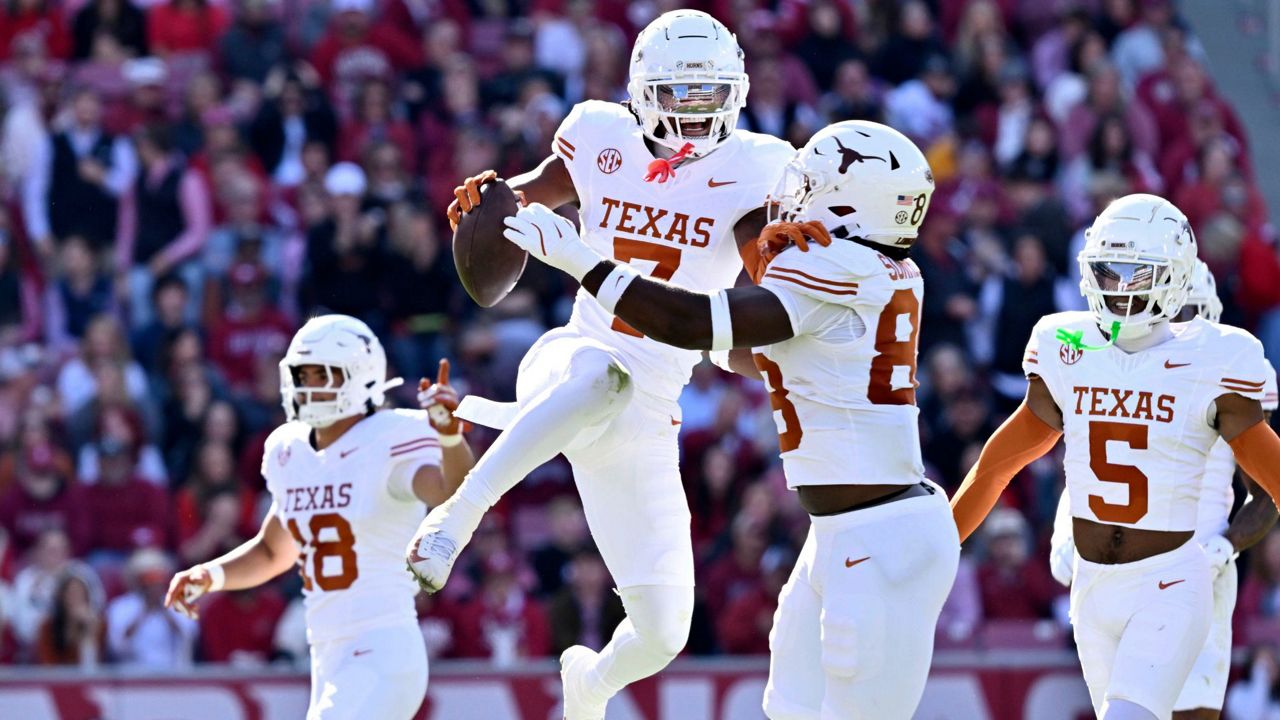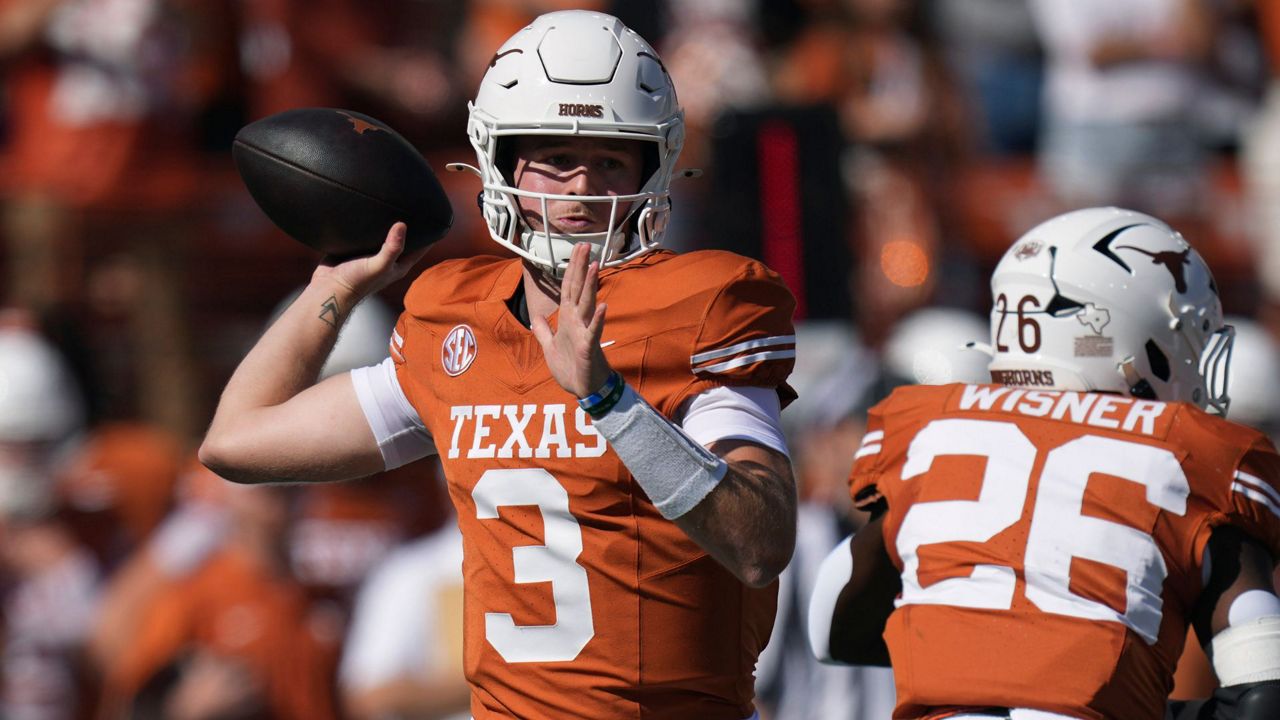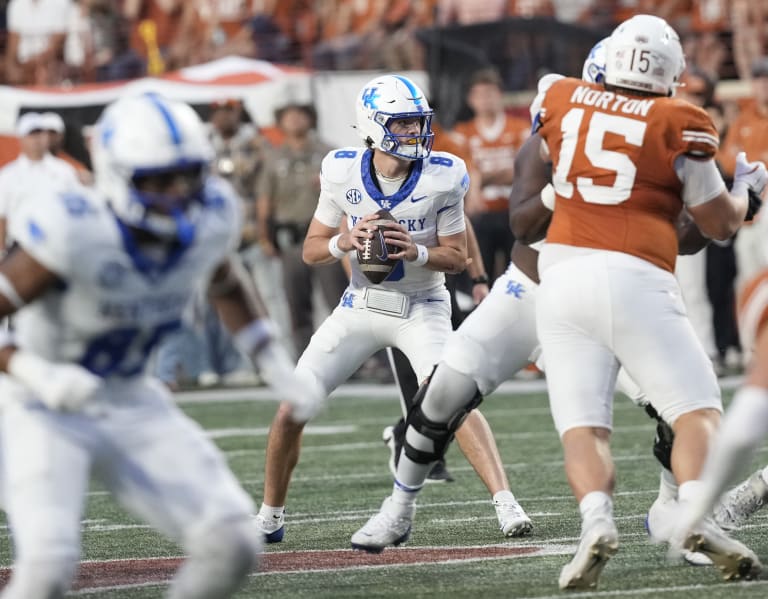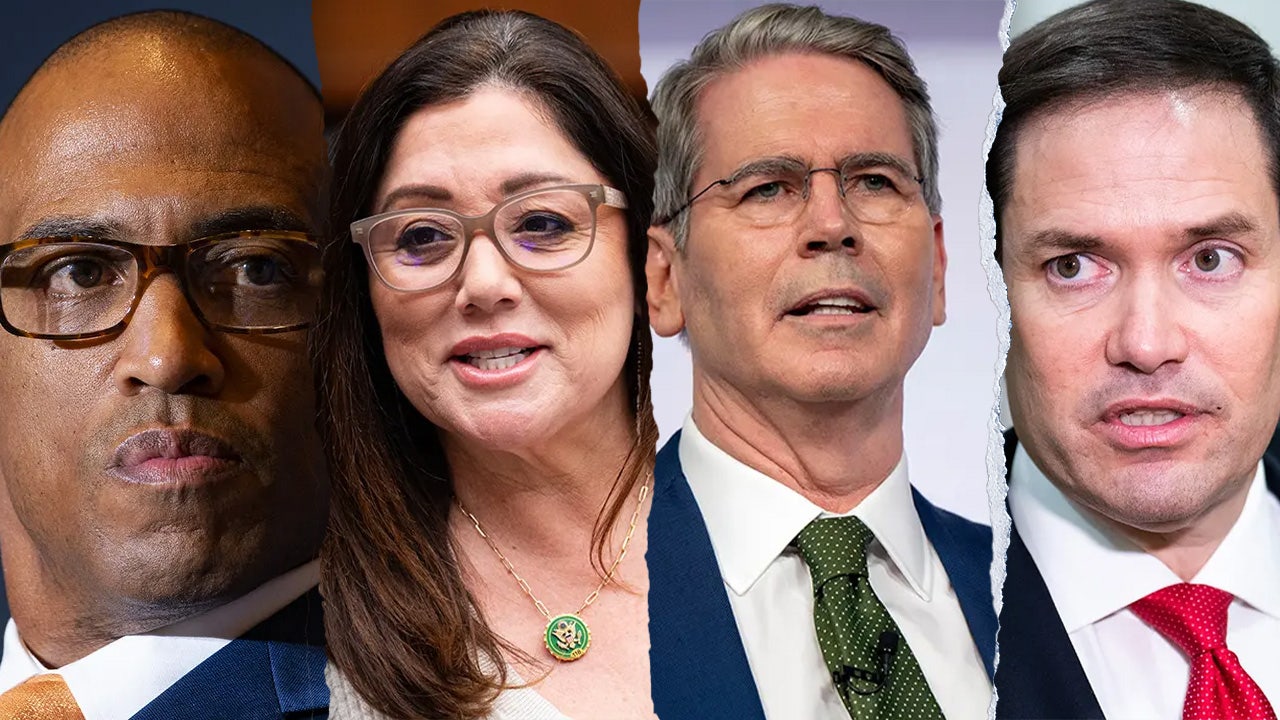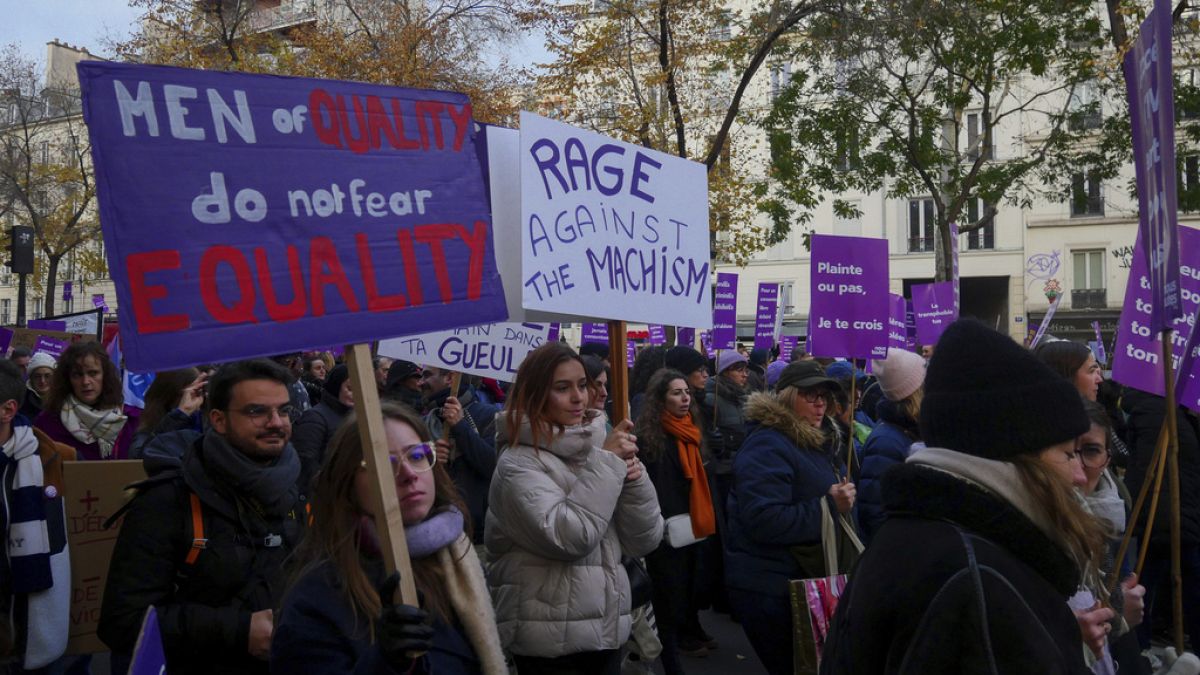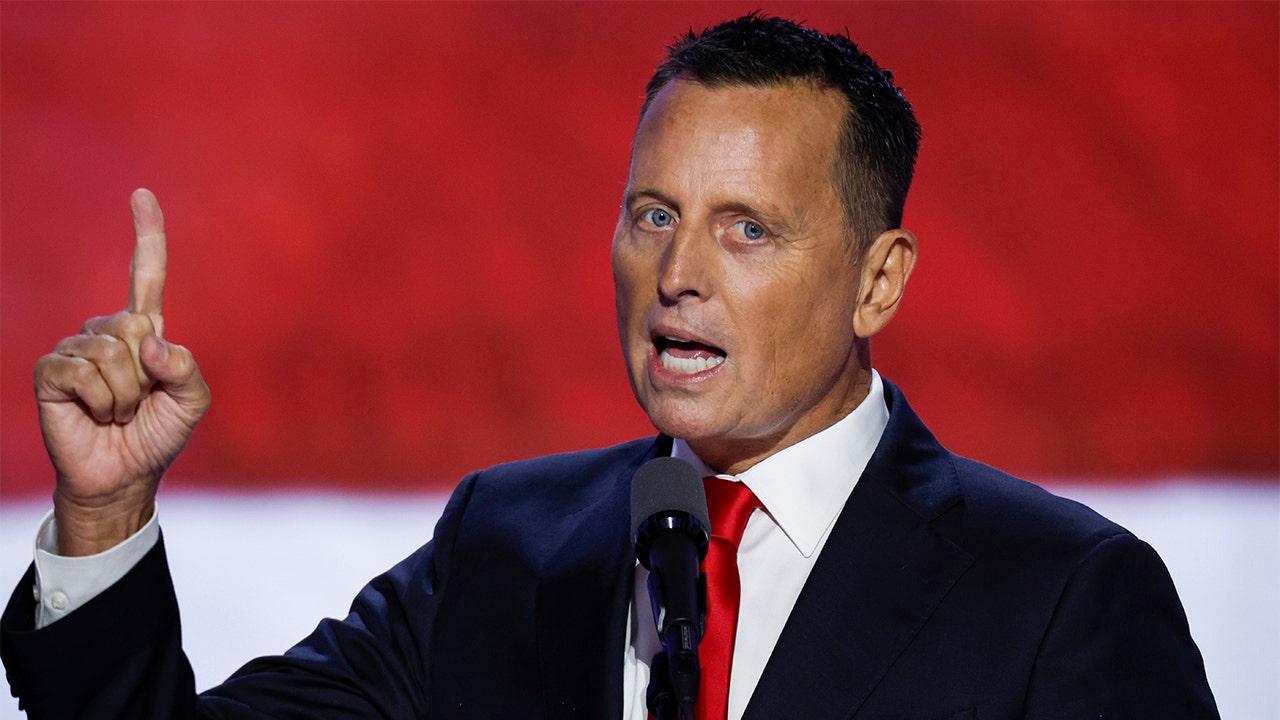Washington, D.C
MLK’s dream for America is one of the stars of the 60th anniversary of the 1963 March on Washington
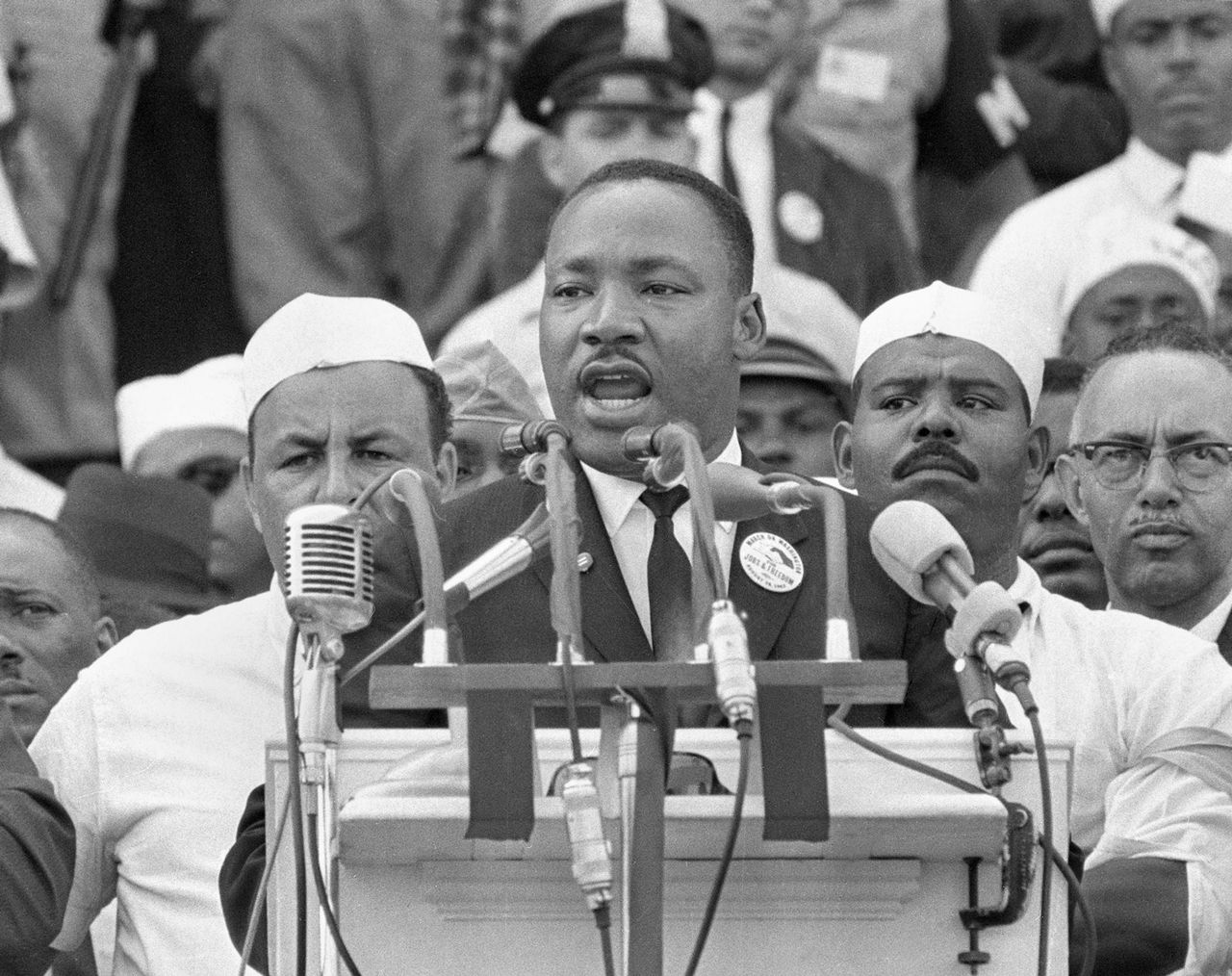
WASHINGTON (AP) — The last part of the speech took less time to deliver than it takes to boil an egg, but “I Have A Dream” is one of American history’s most famous orations and most inspiring.
On Aug. 28, 1963, from the Lincoln Memorial in Washington, Martin Luther King Jr. began by speaking of poverty, segregation and discrimination and how the United States had reneged on its promise of equality for Black Americans. If anyone remembers that dystopian beginning, they don’t talk about it.
What is etched into people’s memory is the pastoral flourish that marked the last five minutes and presented a soaring vision of what the nation might be and the freedom that equality for all could bring.
As participants prepare to celebrate the 60th anniversary of the March on Washington for Jobs and Freedom, that five-minute piece of King’s 16-minute address is the star of that day and today it is the measuring stick of the country’s progress.
King was one of several prominent figures speaking to the many tens of thousands gathered on the National Mall that summer day. Others included A. Phillip Randolph, the march director and founder of the Brotherhood of Sleeping Car Porters; Roy Wilkins, the NAACP’s executive secretary; Walter Reuther, president of the United Auto Workers; and John Lewis, a 23-year-old who led the Student Nonviolent Coordinating Committee and later was a longtime congressman.
There were memorable moments before King spoke.
Eleanor Holmes Norton, who today is the District of Columbia’s veteran nonvoting delegate to Congress, was a SNCC member who helped organize the march. She remembers that march leaders got Lewis to tone down his planned speech because of concern it was too inflammatory. “He had phrases in there about, for example, Sherman marching through Georgia,” Norton said, a reference to Union Gen. William Tecumseh Sherman burning most of Atlanta during the Civil War. “So we had to work with the leaders of the march to change a little bit of that rhetoric.”
King had no peer at the microphone, she said, acknowledging she does not remember now what others may have said. “I’m afraid that Martin Luther King’s speech drowned out everything. It was so eloquent that it kind of surpassed every other speech.”
The first two-thirds were from written text. The actual speech he used is on loan now at the National Museum of African American History and Culture in Washington, in the “Defending Freedom, Defining Freedom” gallery of the museum, and shows where he broke script.
King lieutenant Andrew Young said in an interview that he worked with King preparing the text and “none of the things that we remember were in his speech. They didn’t give him but nine minutes and he was trying to write a nine-minute speech.”
A King biographer, Jonathan Eig, said King hit the end of his written remarks and kept going because “he was Martin Luther King” and “it was time to do what he loved to do best, and that’s to give a sermon.”
Although he set the text aside, his deviation was not extemporaneous in the truest since of the word.
Eight months before the March on Washington, King gave an address in Rocky Mount, North Carolina, with similar themes, including a dream.
In June 1963, King spoke in Detroit and opened with the same recognition of Abraham Lincoln and the Emancipation Proclamation before noting that 100 years later, Black people in the U.S. were not free. He talked of the circumstances and sense of urgency but then moved into what he said was a “dream deeply rooted in the American dream.”
The speech mirrored points he would speak of two months later.
Although King used the theme on several occasions “he always made it sound fresh. That’s kind of how he operated,” said Keith Miller, an Arizona State professor who has studied and written extensively about King’s speeches and addresses.
Whether Jackson was the catalyst or cheered him on after he started, King did not initially intend to speak about a dream and Jackson did say, “Tell them about the dream Martin.” Whatever the close sequence, the two are intertwined now in that moment.
Young said the speech “wasn’t going too well, but everybody was polite listening. But then Mahalia Jackson said, ‘Tell them about the dream Martin’ and he must have heard it or it was in his spirit any way and he took off.”
Arndrea Waters King, King’s daughter-in-law, said Jackson’s suggestion was the moment “that he just really broke out and really started to deliver, if nothing else, what most people remember when they remember the dream.”
Eig, author of “King: A Life,” said he has listened to the master tape made by Motown and she clearly pushes King about the dream, “but it’s only after he has already begun the dream portion of the speech.” Norton, who was nearby and heard Jackson, agrees that was the sequence.
The diversity and size of the crowd and energy were major drivers for the Civil Rights Act of 1964 and the Voting Rights Act of 1965, as well as the fair housing law, Norton said. “It would have been very hard for Congress to ignore 250,000 people coming from all over the country, from every member’s district.”
Aaron Bryant, curator of photography, visual culture and contemporary history at the National Museum of African American History and Culture, said the impact was immediate in some ways.
“After the March on Washington, you had some of the organizers, some of the leaders of the march actually meeting with (President) John Kennedy and (Vice President) Lyndon Johnson, to talk more strategically about legislation. So it wasn’t just a dream. It was about a plan and then putting that plan into action,” Bryant said.
Historians and other luminaries of that time said tragedies and atrocities fortified those plans. Those include the bombing of the 16th Street Baptist Church in Birmingham, Alabama, that killed four girls two weeks after the march; the murders of three civil rights workers in Neshoba County, Mississippi, in 1964; and the televised beatings of civil rights activists on Bloody Sunday in Selma, Alabama, in March 1965.
Eig believes that focus on hope and not the harsher reality of the day and the lack of progress is due in part to the predominantly white media that chose the inspirational part of the speech over King calling for accountability.
That focus has done a “disservice to King” and his overall message, Eig said, because “we forget about the challenging part of that speech where he says that there are insufficient funds in the vaults of opportunity in this nation.”
Bryant said the answer to that probably varies within generations, but a democracy “is always going to be a work in progress. I think particularly as ideas of citizenship and democracy and definitions among different groups change over the course of time.”
Bryant said history shows the progress that followed the march. “The question is how do we compare where we were then to where we are now?”
In the eyes of King’s older son, Martin Luther King III, “Many of us, and I certainly am one, thought that we would be further.” He referred to the rewriting of history today and the rise in public hate and hostility, often driven by political leaders.
“There used to be civility. You could disagree without being disagreeable,” he said.
Copyright 2023 The Associated Press. All rights reserved. This material may not be published, broadcast, rewritten or redistributed without permission.

Washington, D.C
New mural dedicated to DC’s ‘Mayor for Life’ honors career, contributions of Marion Barry – WTOP News
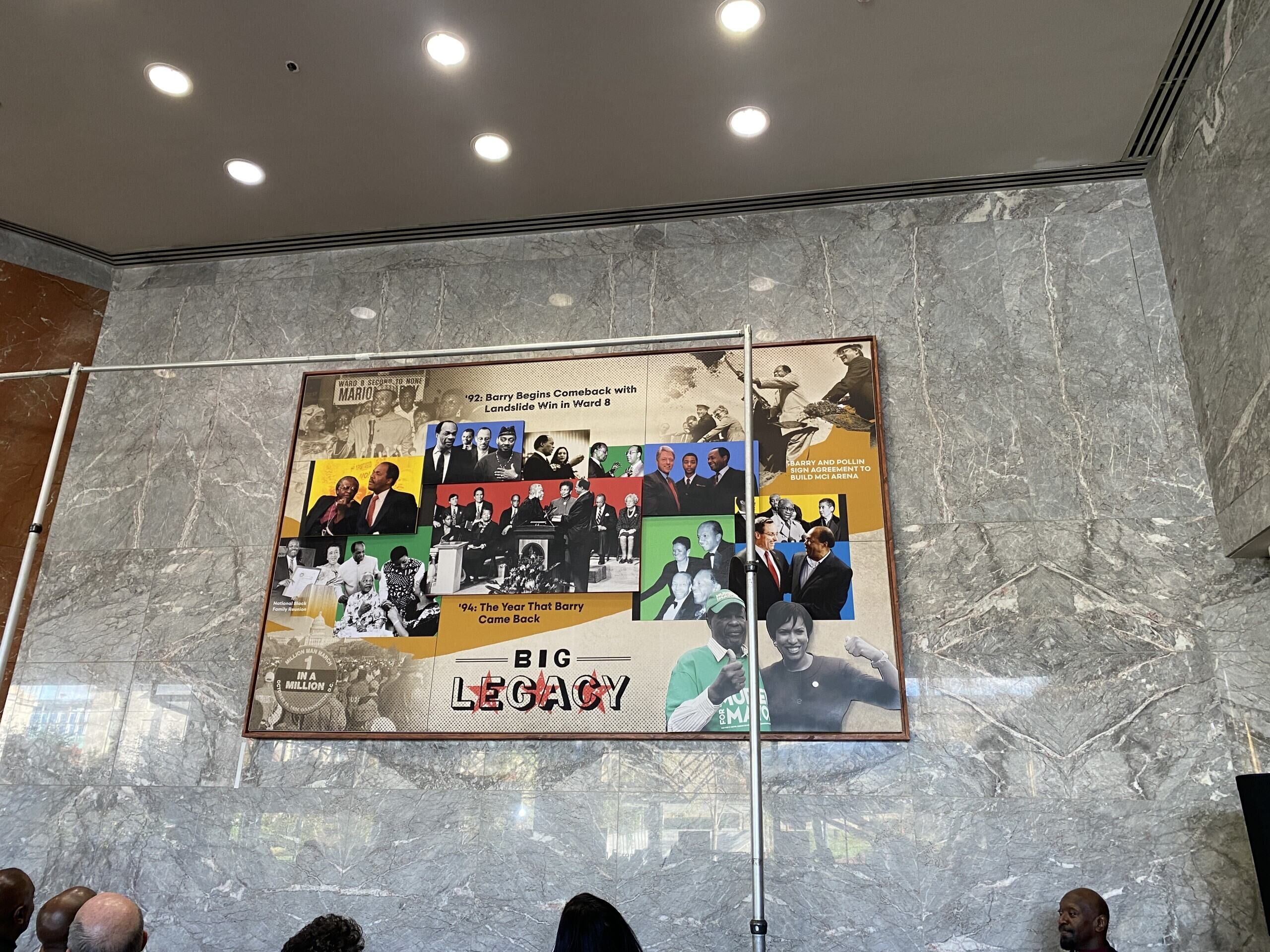
Ten years to the day after his death, D.C. leaders honored the life of the late Mayor Marion Barry with a new mural hanging in his namesake building.
(WTOP/Luke Lukert)
WTOP/Luke Lukert
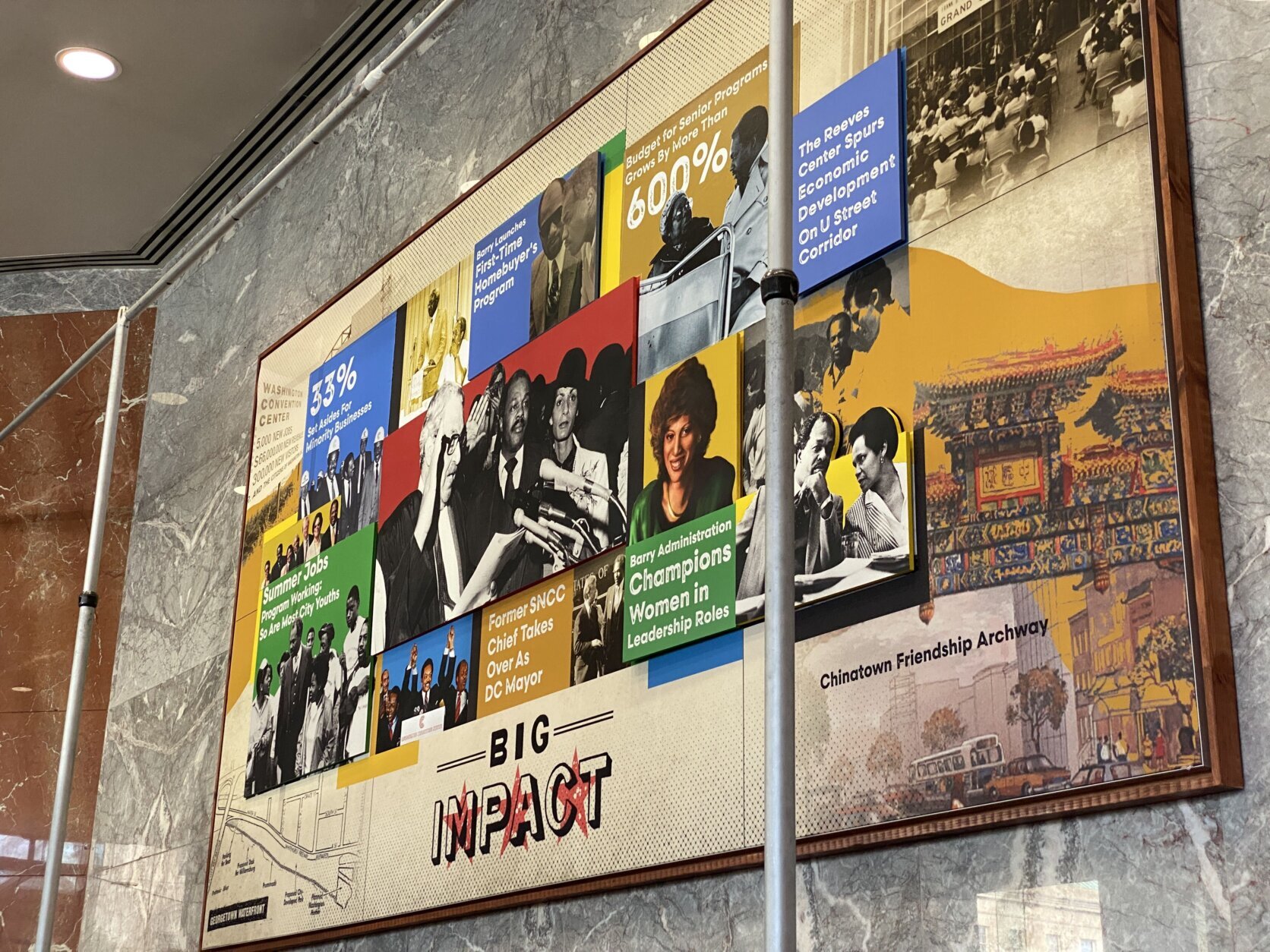
(WTOP/Luke Lukert)
WTOP/Luke Lukert
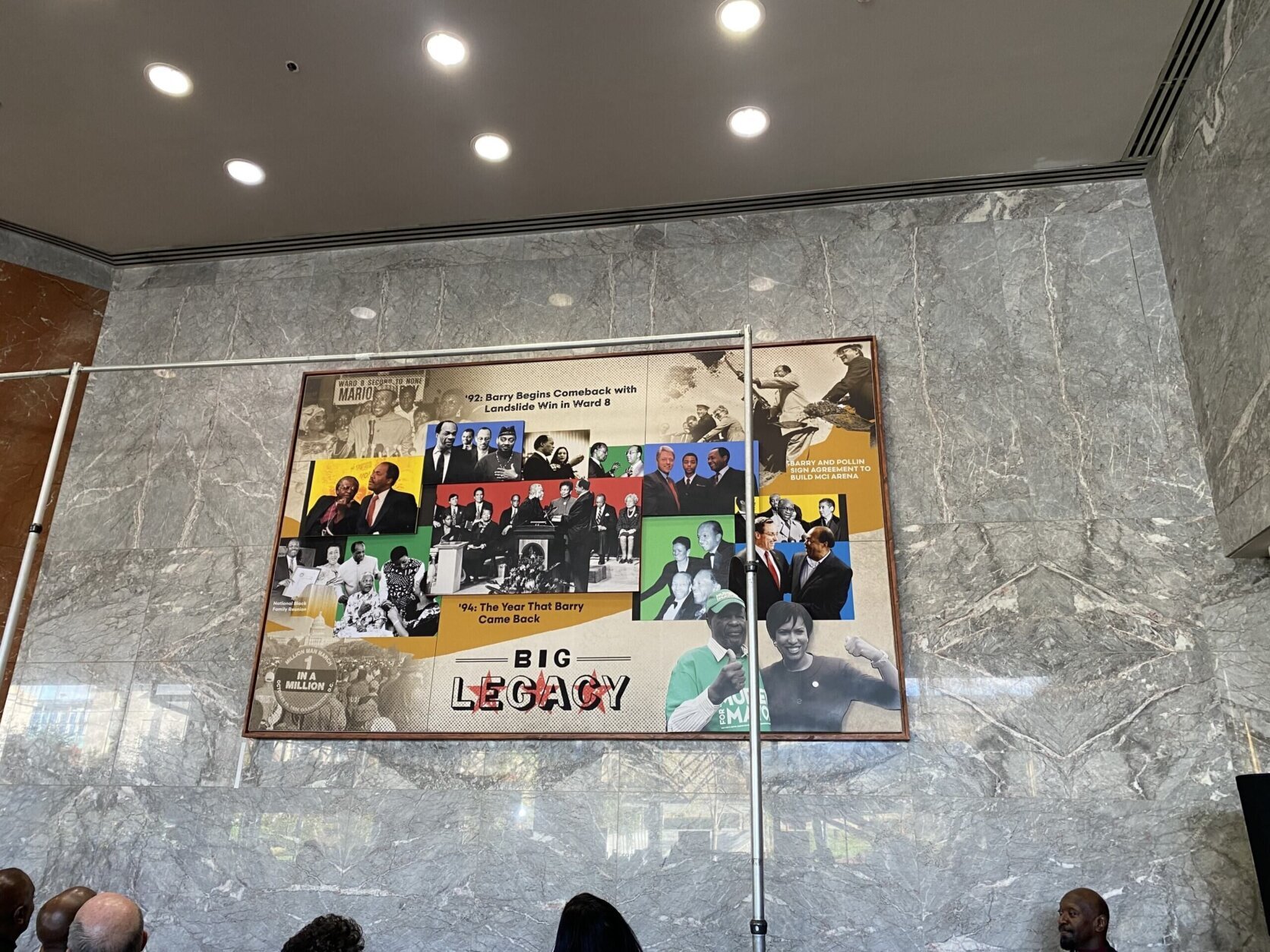
(WTOP/Luke Lukert)
WTOP/Luke Lukert
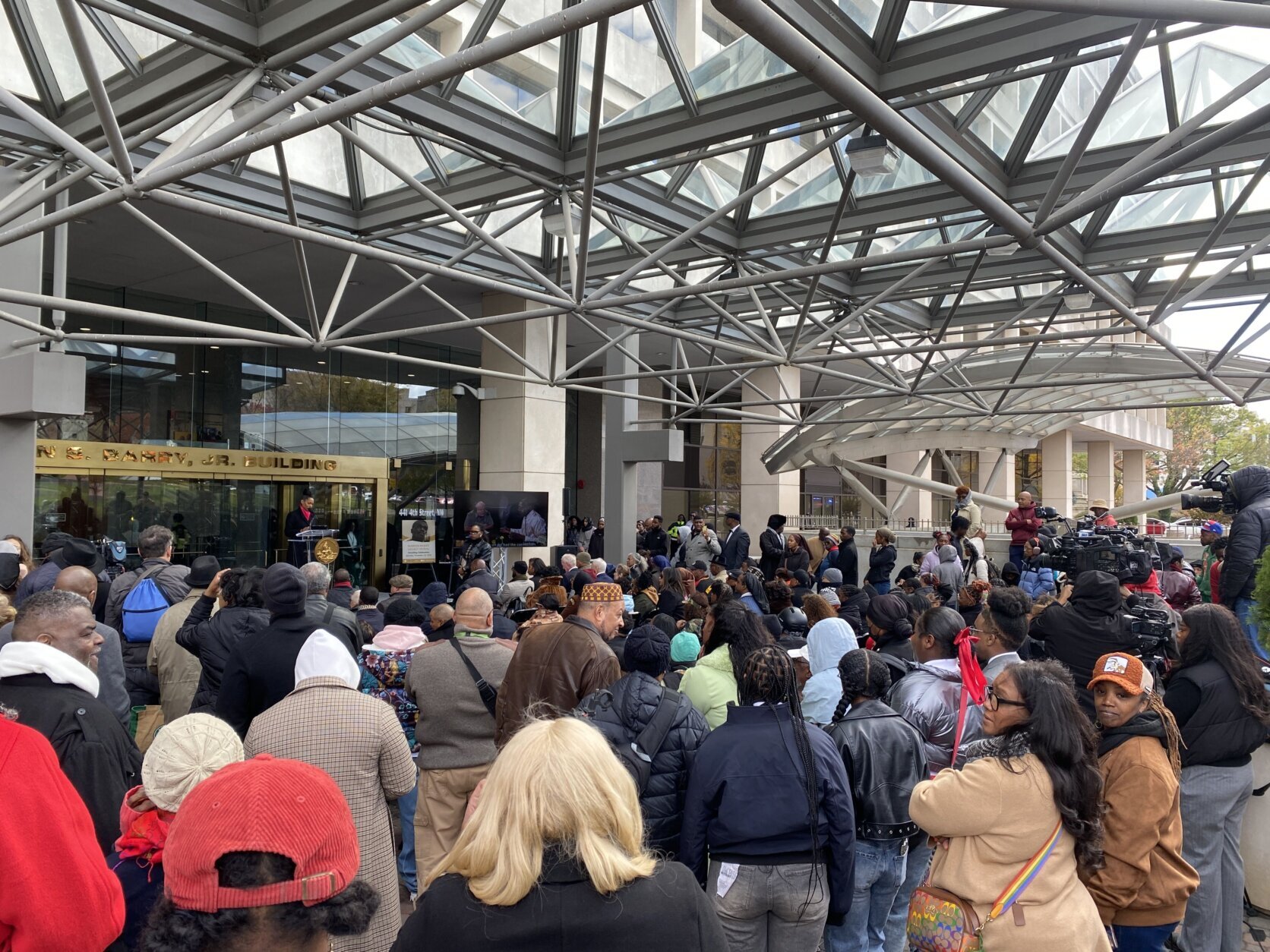
(WTOP/Luke Lukert)
WTOP/Luke Lukert
Ten years to the day after his death, D.C. leaders honored the life of the late Mayor Marion Barry with a new mural hanging in his namesake building.
Mayor Muriel Bowser joined the former D.C. First Lady at the Marion S. Barry, Jr. Building in Judiciary Square on Saturday to pull the curtain down, revealing the new mural dedicated to the “Mayor for Life.”
“My husband really loved Washington, DC and its residents. The mural captures some of the major contributions he made to the City, and some of the people who worked with him to help build the City and empower its residents,” said Cora Masters Barry, Barry’s widow, in a statement.
“I was thrilled that so many residents and visitors were able to join us on this inspirational, entertaining, educational, and historical day, as we honored a man, Marion Barry Jr., whose legacy and love of this city was so deep and strong.”
The mural is broken into three parts, each with a different title and focusing on a different aspect of Barry’s life.
The first panel, titled “Big Vision,” displays Barry’s early years as a civil rights activist and his transition into politics.
The center panel, “Big Impact,” then focuses on his time in office as a Councilmember and four term mayor.
These sections emphasize Barry’s support for Black-owned businesses, summer jobs for youth, programs for seniors and leadership opportunities for women.
The last section of the mural is titled ”Big Legacy.” It highlights the influence Barry still has on the city — showcasing advocacy against apartheid, support for the Million Man March, contributions to the development of the MCI Center, and his work with the DC Control Board.
The many pictures show Barry beside the likes of President Bill Clinton, Nelson Mandela and Martin Luther King Jr.
Another focus of this panel is Barry’s political comeback after a high-profile arrest and conviction on crack cocaine possession charges in 1990. Four years later, he returned to the Mayor’s office after a commanding primary run.
“He told me a lot of things, and he taught us a lot of things, but one of the biggest ones was if you get knocked down, you get back up,” said Mayor Muriel Bowser at the unveiling.
Nabeeh Bilal, an artist based in Ward 8, created the mural.
“You’ll notice that there is not a single solo image of Marion Barry, and that’s because, with his accomplishments and achievements, it was always about others,” Bilal said.
Get breaking news and daily headlines delivered to your email inbox by signing up here.
© 2024 WTOP. All Rights Reserved. This website is not intended for users located within the European Economic Area.
Washington, D.C
Skull of St. Thomas Aquinas to Visit Washington, DC, On International Tour

Friday’s event will begin with a solemn Mass celebrated by Cardinal Wilton Gregory, archbishop of Washington, followed by an opportunity to venerate the relics.
The major relics of St. Thomas Aquinas, “The Angelic Doctor,” are on tour and scheduled to make a stop in Washington, D.C., next weekend as part of the commemoration of the 700th anniversary of his canonization.
Members of the faithful will be able to venerate the relics, including his skull, on two separate occasions: first at St. Dominic’s Church on Friday, Nov. 29, and then again on Saturday, Nov. 30, at the Dominican House of Studies. The event is co-sponsored by the Thomistic Institute.
“In a time of renewed interest in the teaching of St. Thomas Aquinas, the jubilees of his canonization (700 years in 2023), death (750 years in 2024), and birth (800 years in 2025) draw our attention to the masterwork of wisdom and sanctity which God wrought in him,” Dominican Father Gregory Pine, assistant director at the Thomistic Institute, said in a press release.
“The opportunity that we have to receive and venerate his relics makes this grace all the more proximate and precious to us,” Father Pine added.
Friday’s event will begin at 12:10 p.m. with a solemn Mass celebrated by Cardinal Wilton Gregory, archbishop of Washington, followed by an opportunity to venerate the relics of the revered theologian and philosopher from 1 p.m. to 7 p.m. There will also be solemn vespers at 5:30 p.m. and night prayer at 6:45 p.m. with a Marian procession to follow.
On Saturday, the Dominican House of Studies will begin the day with solemn lauds and a votive Mass of St. Thomas Aquinas at 7:30 a.m., and veneration of the relics will take place from 8:30 a.m. to 5 p.m. Pine will also preach at 3 p.m. that day.
“‘Get wisdom, get understanding’ (Prv 4:5). One way is to study, another way is to pray for it, but an exceptional way is to pray for it in the presence of the skull of St. Thomas Aquinas,” Dominican Father James Brent, an assistant professor of philosophy at the Dominican House of Studies, also stated in the release.
The relic of St. Thomas Aquinas’ skull comes to the U.S. from the Dominicans in Toulouse, France, and is one of two skulls Church officials claim to have belonged to the 11th-century saint. The other is housed in the Italian city of Priverno. The Dominicans in France commissioned a new reliquary for the skull last year to celebrate the saint’s canonization anniversary.
After Aquinas’ death in 1274, his body was kept in Fossanova Abbey in Priverno until 1369, when his relics were moved to Toulouse, a city in southwestern France, where the Order of Preachers was established. Aquinas’ tomb rests in the Church of the Jacobins.
Researchers are currently weighing the possibility of conducting an in-depth forensic analysis of both skulls to determine their authenticity.
Where do the relics go next?
After two stops in Washington, D.C., on Nov. 29 and Nov. 30, Aquinas’ relics hit the road for their U.S. tour:
Charlottesville, Virginia: St. Thomas Aquinas on Dec. 2
Providence, Rhode Island: Providence College on Dec. 4
Cincinnati: St. Gertrude Priory on Dec. 6
Columbus, Ohio: St. Patrick Priory on Dec. 7–8
Louisville, Kentucky: St. Louis Bertrand on Dec. 10
Springfield, Kentucky: St. Rose Priory on Dec. 12
New York City: St. Vincent Ferrer on Dec. 14
Philadelphia: St. Patrick on Dec. 16
Baltimore: Sts. Philip and James on Dec. 18
Washington, D.C
DC brothers freed after wrongful murder convictions seek presidential pardon

Two brothers who spent decades in prison after being convicted of a 1984 murder in Washington, D.C., they say they did not commit, are seeking a presidential pardon.
Charles and Chris Turner were convicted as teenagers for the killing of Catherine Fuller in Northeast Washington, D.C. near the intersection of 8th and H Street, Fox 5 DC reported.
They have since been released and are fighting for a pardon that would help restore their rights.
“With the pardon, we get a chance to fix all that and bring a closure to this case once and for all,” Chris Turner told Fox 5 DC.
TWO TEENS ARRESTED IN CONNECTION WITH ROBBERY THAT LEFT BELOVED DC DJ DEAD: ‘WE WILL HOLD YOU ACCOUNTABLE’
Charles and Chris Turner were convicted as teenagers for the killing of Catherine Fuller in Northeast Washington, D.C. near the intersection of 8th and H Street. (iStock)
After decades in custody for a crime which they did not commit, the brothers maintain a positive view on the future and the impact they can have moving forward, stressing that they will not allow their case to mentally hold them back.
“People get upset more that we’re not bitter,” Chris Turner said. “We think if you remain bitter, remain upset about what occurred – even though it was an atrocity and it was injustice – that you stay locked up mentally.”
The case revealed allegations of suppressed evidence, coerced testimony and investigative errors.
Seventeen people were arrested in connection with Fuller’s murder, with eight ultimately convicted, according to Fox 5 DC. The six who are still alive all maintain their innocence after collectively serving more than 200 years behind bars.
HEAD OF DC PRESCHOOL ARRESTED AFTER DIRECTING UNDERCOVER OFFICER ‘TO ABUSE HIS CHILD,’ JUSTICE DEPARTMENT SAYS

The Turner brothers have become involved in their community and remain hopeful about their futures, although limitations in areas such as career prospects remain due to their felony records.
“We’ve actually said we might join the police force if we didn’t have this on our record … I used to want to be in the Navy. I can’t serve my country because I have a record,” Charles Turner said.
The brothers’ fight for a pardon represents a crucial step in restoring their reputation and rights lost in the convictions.

The case revealed allegations of suppressed evidence, coerced testimony and investigative errors. (iStock)
CLICK HERE TO GET THE FOX NEWS APP
Charles Turner said he believes a pardon would bring validation to himself and the other five convicted men, as well as to his family, friends and others who have supported him.
“It would also validate – help to validate – what they know, not what they believe, but what they know. There’s a big difference there,” he said.
Most presidential pardons have been granted between Election Day and Inauguration Day.
-

 Business1 week ago
Business1 week agoColumn: Molly White's message for journalists going freelance — be ready for the pitfalls
-

 Science4 days ago
Science4 days agoTrump nominates Dr. Oz to head Medicare and Medicaid and help take on 'illness industrial complex'
-

 Politics6 days ago
Politics6 days agoTrump taps FCC member Brendan Carr to lead agency: 'Warrior for Free Speech'
-
/cdn.vox-cdn.com/uploads/chorus_asset/file/25739950/247386_Elon_Musk_Open_AI_CVirginia.jpg)
/cdn.vox-cdn.com/uploads/chorus_asset/file/25739950/247386_Elon_Musk_Open_AI_CVirginia.jpg) Technology5 days ago
Technology5 days agoInside Elon Musk’s messy breakup with OpenAI
-

 Lifestyle6 days ago
Lifestyle6 days agoSome in the U.S. farm industry are alarmed by Trump's embrace of RFK Jr. and tariffs
-

 World6 days ago
World6 days agoProtesters in Slovakia rally against Robert Fico’s populist government
-

 News6 days ago
News6 days agoThey disagree about a lot, but these singers figure out how to stay in harmony
-

 News6 days ago
News6 days agoGaetz-gate: Navigating the President-elect's most baffling Cabinet pick
